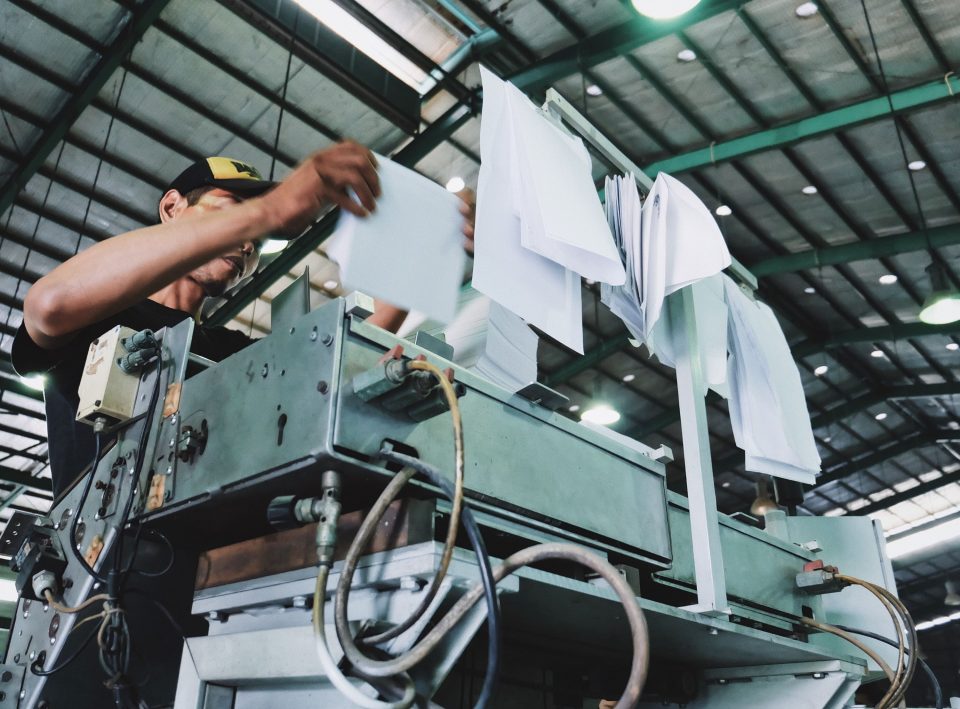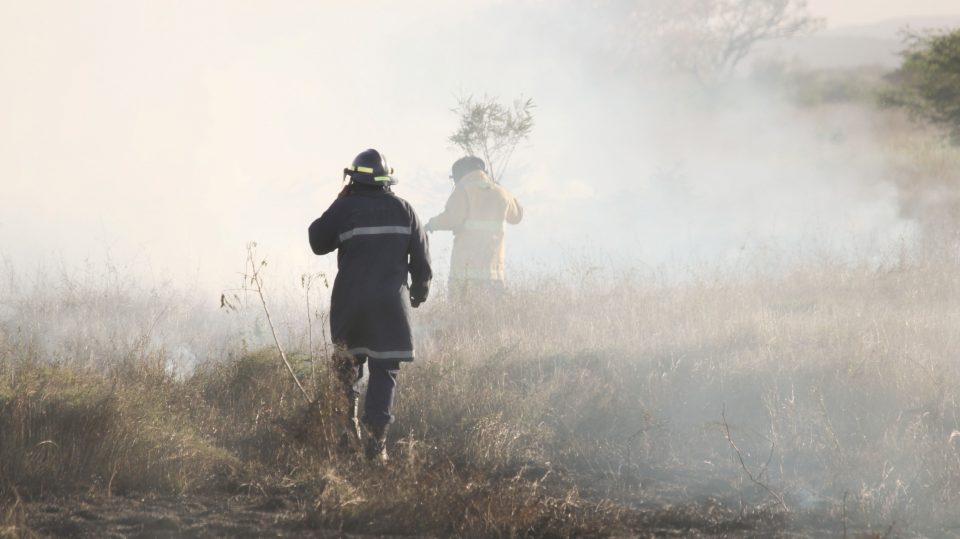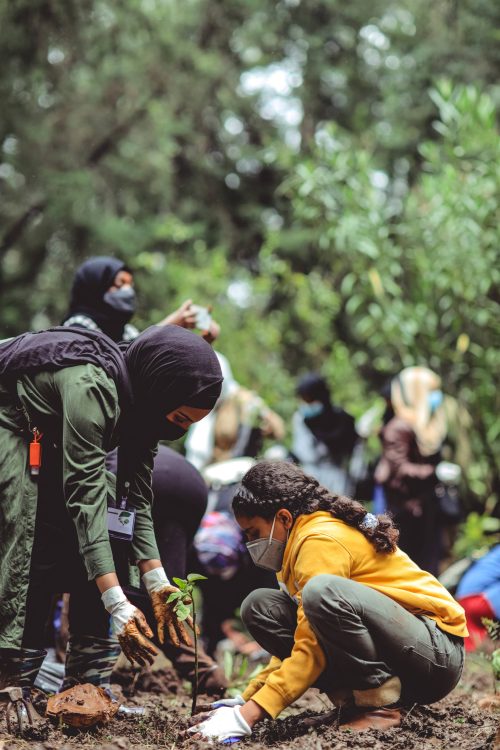Simple swaps for a sustainable Christmas

Best special edition books to gift
December 9, 2021
Gifts for the book lover in your life (that aren’t books)
December 21, 2021
Is it possible to have a more sustainable Christmas? We look at some of the simple swaps you could make this year.
Our awareness of the problems facing our planet and the need for more sustainable lifestyles is typically far ahead of government action on these issues.
However, our spending and gifting at Christmas doesn’t reflect these sentiments. In the UK alone, around 114,000 tonnes of plastic packaging are thrown away each year.
Happily, consumer demand is helping a new wave of Christmas decorations, food choices and events to come to market. By making smart choices, we can all do our bit towards a more sustainable holiday period.
#1. Buy less
We’re all familiar with the sustainability mantra: reduce, reuse, recycle. And it’s important that the first of these is “reduce”.
This year, consider carefully: how many gifts do you really need to buy?
One UK charity estimates that of the population of 67 million, 21 million people receive at least one unwanted gift each Christmas.
For those gifts you really do need to buy, opt for biodegradable gifts rather than plastic wherever possible. Try to purchase goods produced locally, for a lower carbon footprint. For the ultimate in low-carbon giving, how about homemade gifts or bakes made from homegrown or foraged materials?
Stanford University recommends: “Environmentally-smart gifts include homemade ones: home-baked cookies, bread or jams, a plant or tree. Ones that don’t create any waste at all: concert or movie tickets, dinner at a restaurant, or an IOU to help rake leaves or repair a leaky faucet. Ones that get “used up”: candles, soap, or seeds for next year’s garden.”
#2. Choose a “second hand only” wish list
If the first instruction of the sustainability mantra is to reduce, the second is to reuse. Could this be inspiration for a Christmas gifting challenge with your family or friends?
If everyone agrees to source their gifts this year from thrift shops you could save money as well as helping to reduce consumption and, as a result, carbon emissions.
#3. Source – and dispose of – your Christmas tree sustainably
Make sure you buy your Christmas tree from responsibly managed forests. Don’t buy an artificial tree because they usually cannot be recycled and, typically, 14 percent of people will dispose of their fake Christmas tree in any given year.
It’s worth noting that the Carbon Trust calculates that a two-metre-high real Christmas tree will have a carbon footprint of 16 kg of CO2 if it ends up in landfill. While this compares favourably to a carbon footprint of 40 kg of CO2 for an equivalent artificial tree, it does underline the importance of also disposing of your Christmas tree responsibly.
Make use of local recycling schemes, add to your own compost, or perhaps use the branches to create next year’s Christmas ornaments.
#4. Read the labels on your wrapping paper
According to a 2017 study, 540,000 tonnes of wrapping paper ends up in North American landfills after the holidays. Much of it can’t be recycled – a surprising amount of wrapping paper contains plastic.
This year, if you are buying wrapping paper, make sure that you opt for plastic-free wrapping that can be easily recycled. Better yet, save the paper and reuse it! You should also choose a plant-based tape, rather than a plastic-based sticky tape. If you are giving to people in your own household, you might even opt for wrapping in fabric squares tied with ribbon so it can be easily rescued and reused or repurposed.
#5. Ditch the plastic decorations for sustainable paper
It’s a long time since tinsel contained lead – that was banned by the FDA in the 1970s. However, tinsel remains problematic – it’s not great for the environment.
Choose instead to go for a natural look this Christmas with sustainable paper decorations. Paper garlands are fun to make with the kids and add a homespun charm to your Christmas decorations. Catch up with our paper makes for Christmas here.
#6. Choose sustainable Christmas crackers
Given the single-use waste that is created by Christmas crackers, they are a great candidate for swapping out for more sustainable alternatives. At one end of the scale the RSPB is simply eliminating the plastic packaging and swapping out the traditional plastic toys for wooden gifts. Meanwhile, the gifts in My Green Christmas crackers are herb seeds for you to plant and grow.
#7. Bring the outside in with decorations made with natural materials
Traditional decorations are a green alternative to gaudy plastic baubles and glittery wall art. If you don’t have evergreen foliage in your garden, it’s a brilliant excuse for going for a bracing country walk and snaffling some holly, dried seed heads, fir or eucalyptus. Weave through your bannisters, add to your mantlepiece, save for your table or make a wreath with our sustainable Christmas décor tips.
#8. Go meat-free
Seven out of ten people will readily admit to buying far more food than they need during the holiday season – and arguably the worst offender is the turkey. Around two thirds of people report that at least some it usually ends up in the bin.
Even without this allowing for such a waste, switching to a plant-based diet can help fight climate change. That’s the finding of a major report by the UN’s Intergovernmental Panel on Climate Change (IPCC). It says that the West’s high consumption of meat and dairy is fuelling global warming. Meat consumption is responsible for releasing greenhouse gases such as methane, CO2, and nitrous oxide. And while turkey has a lower carbon footprint than most red meats, a plant-based diet is even better.
There are plenty of recipes for vegan showstoppers that could replace your turkey available online – from Jamie Oliver, to British supermarket Waitrose or the Vegetarian Society.
#9. Sustainable party wear: hire – don’t buy
Frighteningly, 92m tons of “fast fashion” waste is dumped in landfills around the world every year. 2018 research for the charity Oxfam revealed that 61% of respondents would not recycle last year’s Christmas party outfit. If you don’t want to be featured on social media wearing last year’s outfit, there’s no need to buy single-wear fashion. A more sustainable alternative would be to hire this year’s Christmas party outfit instead.
#10. Let your smile do the twinkling – not the fairy lights
Christmas lights twinkling in the brisk evening air must be one of the holiday season’s simple pleasures. However, the Energy Saving Trust says the UK alone could fill 15,500 hot air balloons with the carbon dioxide produced by its Christmas lighting.
First of all, avoid battery powered strings of lights – these are the worst of all worlds, creating problematic plastic waste that will end up in landfill as well as toxic battery waste.
An easy switch up is to replace bulbs with LED alternatives. LEDs use less energy, so this will help you reduce your carbon footprint. Even better, if you switch to solar lighting, you can improve your footprint further – although you’ll need to make sure the solar charging system is set up to cope with the lack of sunlight during winter.
Perhaps the best and simplest strategy on lighting, however, is to adopt the advice we started this article with: reduce. It is, after all, the most effective way to lower your carbon footprint.
Want more Christmas inspiration?
- Four ideas for making Christmas decorations out of paper.
- Or read our ideas for customising your Christmas cards with simple lettering techniques.
Want more sustainability tips?
- Discover our pick of sustainable back to school goodies.
- Read why you should ditch the plastic for paper.
- Or learn about the people protecting our forests.




